Know Your Lore: Fall of the Gorian Empire
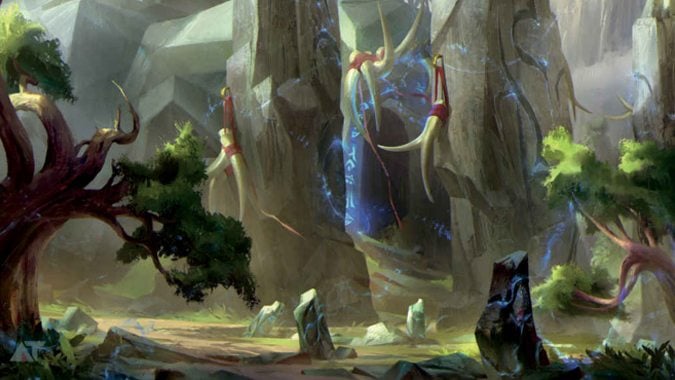
The original Horde wasn’t the first time the Orc clans of Draenor united – it was simply the one that stuck. With the defeat of the ogron and the rise of the Gorian Empire, there was little reason for the Orcs to remain in hiding. They emerged from their established underground settlements into a world that was far less threatening. With little to threaten them, Orc population numbers grew exponentially, until another threat rose – overcrowding, and the lack of wildlife to hunt.
But the Orcs had faced far worse adversity in their time on Draenor – and the world was a vast place. So the Orc population began to split and splinter into individual clans, settling in regions far and wide. The Blackrock Clan remained in Gorgrond, practicing and developing their smithing skills on the unique ore of the region. The Laughing Skull and Lightning’s Blade also remained in the region, while other clans settled far and wide.

Birth of the Shaman
In the southeastern corner of Draenor, a unique clan of Orcs was established. The Shadowmoon Clan was fascinated with the skies above, and believed they could go so far as to predict the future based on the movement of the stars. Isolated from any Gorian settlements, the Shadowmoon were free to practice and develop their unique mysticism in relative peace – but that didn’t mean they stayed in one place.
Driven to hear the will of the divine, Shadowmoon mystics would frequently travel across Draenor. One region in particular resulted in strange dreams and visions – Nagrand. This wasn’t necessarily divine intervention – Nagrand was simply the final resting place of Grond. It also happened to be the place where Draenor’s elements were most concentrated, home of the primordial spirits of earth, air, water, and fire.
The Orcs called this place the Throne of the Elements. Due to the respect and deference they showed to the elemental spirits, the Orcs developed a close bond. It was the start of Shamanism, and it rested not on the brute force and magical prowess of the Ogres, but on the reverence the Orcs showed to the elements. When the elemental spirits granted power to a Shaman, they could move mountains, turn tides, or command the wind itself. It was a raw, natural power that the Ogres simply didn’t have.
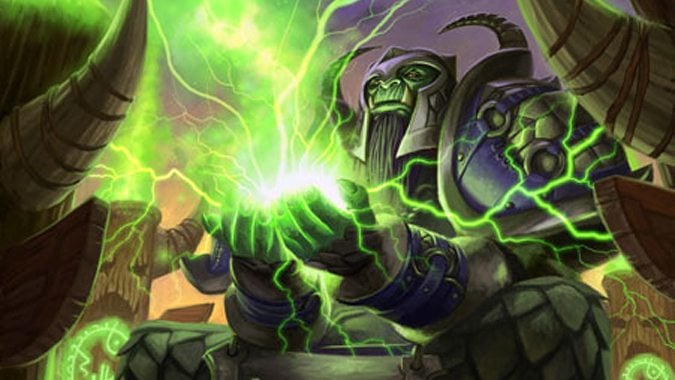
Elemental bonds
The Shadowmoon Clan was the first clan to really develop Shamanism, but they weren’t alone. Although the Orc clans were spread far and wide across the world, the Shadowmoon spread their teachings to each one in turn. Orc children were taught from a young age to treat the elements with respect and reverence. Those Orcs who chose to become Shaman in their own right were sent on pilgrimages to the Throne of Elements. There, they entered trances to attune to the elements, and seek the blessings of the spirits.
Not everyone was lucky enough to succeed. Communing with the elements meant extending beyond the veil of the physical world. In their journeys, some witnessed a dark and dangerous place – the realm of the Void. Those that survived the experience weren’t sane when they emerged from their trances, and as a result, were exiled. Clanless, these maddened orcs settled in caverns beneath Nagrand, their faces tattooed with white skulls.
But those that succeeded in gaining the blessing of the elemental spirits returned to their clans as spiritual leaders. The bonds between Shaman overrode clan loyalties, which left Shaman in a space where they could mediate between clans and settle conflicts. As for the Shadowmoon, they established a biannual gathering of Shaman from all clans called the Kosh’harg festival. Eventually, the festival expanded to include not just Shaman, but all Orcs. It was a space for the clans to reunite, put aside rivalries, share news, and forge new friendships.
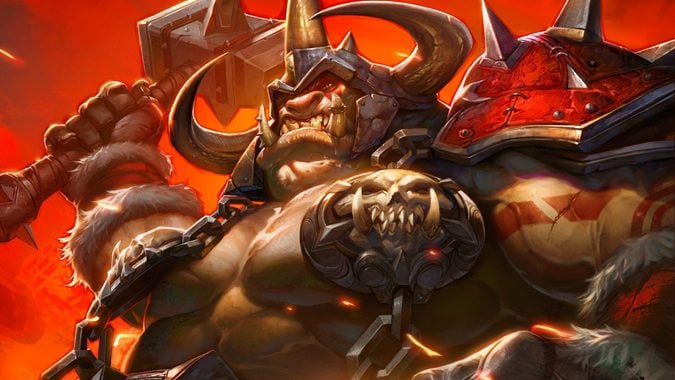
Orc vs. Ogre
The Orcs lived peacefully for generations. They didn’t attempt to cross the Gorian Empire, although there were occasional fights over territory. The Ogres by and large ignored the Orc clans, far more interested in tracking down more Apexis crystals and expanding their own knowledge and power. As far as they were concerned, the Orcs were beneath their notice. Small, insignificant, and not really what any Ogre would consider a true threat.
This changed as they began to observe Orc Shaman in action. What they had initially considered quaint and insignificant magic was in fact far more powerful than they could have ever guessed. After seeing an elder Shaman turn away a flash flood that would’ve otherwise destroyed an Orc village, the Ogres began to realize the true power of the elements – and they wanted that power for themselves.
But reverence? Respect? These were not the ways of the Ogre. Rather than trying to learn from the Orcs, the leader of the Gorian Empire – Imperator Molok – simply sent an army into Nagrand and claimed the Throne of the Elements, driving the Orcs out of the territory. Because it wasn’t a mass slaughter, it didn’t gain the ire or retaliation of the Orc clans.
However, as the Ogres dissected the site and attempted to glean its secrets, their experiments grew more reckless. Eventually the Ogres’ magic and the residual energies of Grond ignited in an explosion – one that detonated the remnants of Grond’s skull and killed every Gorian sorcerer inside it. The elements were thrown wildly out of balance as a result, and cried out to the Orc Shaman for aid.
This time, the Orc clans were driven to respond.
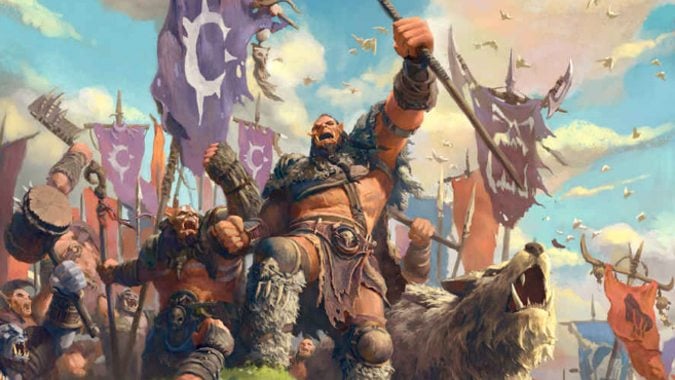
First strike
At the next Kosh’harg festival, the Shaman among the clans tried to bring Draenor’s elemental spirits back into balance. But they couldn’t manage to calm the elements – and the Shadowmoon Clan’s elder Shaman, Nelgarm, turned to the clans for aid. Divided as they were, the Ogres would continue their meddling, and the elemental spirits would soon tear the world apart. United, the Orcs could push back against the Ogres, and restore calm to the world.
It wasn’t a Horde, per se. It was simply an act of unity, one that would prevent irreversible harm to the world. The clans agreed, and Nelgarm called upon the elements, asking them to bless the united clans with their protection. Once established, the united clans moved as one to strike at the Throne of the Elements and reclaim it. The Gorian sorcerers were taken by surprise and retreated.
Although surprised by the united attack, Imperator Molok was quick to order retaliation. The Gorian armies turned their power on the Orcs, slaughtering every Orc encampment they could find. The world quickly descended into all-out war between Orc and Ogre. But while the Ogres expected this show of brute strength would quickly cow the Orcs into submission, they underestimated their enemy…and the elemental spirits that acted as their allies.
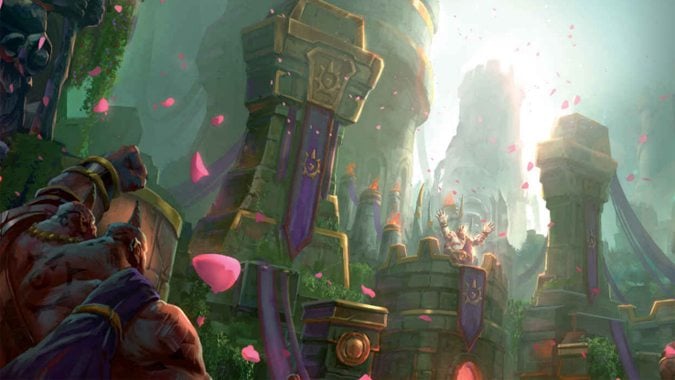
Standoff
Bit by bit, the united Orc clans cleverly worked to dismantle the Gorian Empire’s network of fortresses and outposts, pushing the Gorian armies back to Goria, the capital city. For their part, the Ogres assumed they could simply hold out and outlast the siege, accessing resources via oceanic trade. But this soon proved to be an inferior tactic – they needed their land trade routes. To access them, they needed to get rid of the Orcs.
With few options, the Ogres turned to the tactic that had always worked for them in the past – the Apexis crystals. In researching their hidden knowledge, they eventually discovered a legend about the Curse of Sethe, and decided to develop a similar infliction to inflict upon the Orcs. This was the birth of the red pox – a devastating disease that spread like wildfire. Nelgarm consulted with the elements and discovered that the Ogres were responsible for it. Healthy soldiers were dying, Orc numbers were dwindling, and time was running out for the clans.
Left with no other alternative, Nelgarm turned once more to the elements. He gathered the Orc Shaman together, and they asked as one for the most violent request they’d ever made – Goria’s annihilation. Never before had they asked for anything so dangerous. But Nelgarm and the other Shaman knew that if the Ogres won out, they would once again attack the Throne of the Elements.
It was enough of a reason for the elemental spirits to act.

Goria’s fall
In answer to Nelgarm’s call, storms began to rumble overhead and the ground began to tremble. In mere hours the walls of the massive city crumbled and fell, crushing those inside. Fires tore through the rubble, sealing off any routes of escape and burning the ships in the harbor. And when nothing was left but ash, the ground rent itself open and swallowed Imperator Molok and his city whole.
Goria was gone. The heart of the Gorian Empire had been torn asunder, and none survived to tell the tale. The other Ogre cities and outposts didn’t know exactly what had happened, but they knew enough to halt any experiments or tampering with the elements. The elemental spirits of Draenor had thoroughly demonstrated what it meant to draw their wrath, and there wasn’t an Ogre on Draenor willing to risk that kind of retaliation a second time.
As for the Orcs, while they had secured a victory, it was a sobering one. Many had lost their lives in the war, and Goria’s fall was a terrifying reminder of the strength of the elements. With Goria’s defeat, the need for unity was over – and so the Shaman proposed that the clans once again go their separate ways. But remnants of that war would haunt the Orcs forever – a cure for the red pox was never really found, and outbreaks of the disease would continue on for generations after.
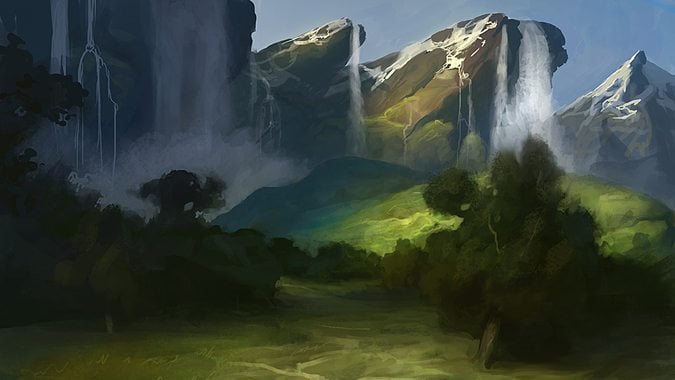
Aftermath
In the wake of Goria’s downfall, the Gorian Empire crumbled. The remnants of Ogre society formed their own city-states, and never set to war with the Orcs again. After seeing what happened to Goria, who could blame them? As for the Orcs, they returned to their territories and returned to their lives, coming together for Kosh’harg festivals, then going their separate ways.
As the years passed, the scattered Orc clans began to encroach and claim Ogre territories. Eventually, they surpassed the Ogre population in size, taking their place as the most advanced and dominant race on Draenor. Although the clans continued to occasionally clash with each other, they lived for the most part in peace. Draenor was a harsh world, but it seemed as though the Orcs were destined to master it in their bid for survival.
Please consider supporting our Patreon!
Join the Discussion
Blizzard Watch is a safe space for all readers. By leaving comments on this site you agree to follow our commenting and community guidelines.
 @Shadesogrey
@Shadesogrey




